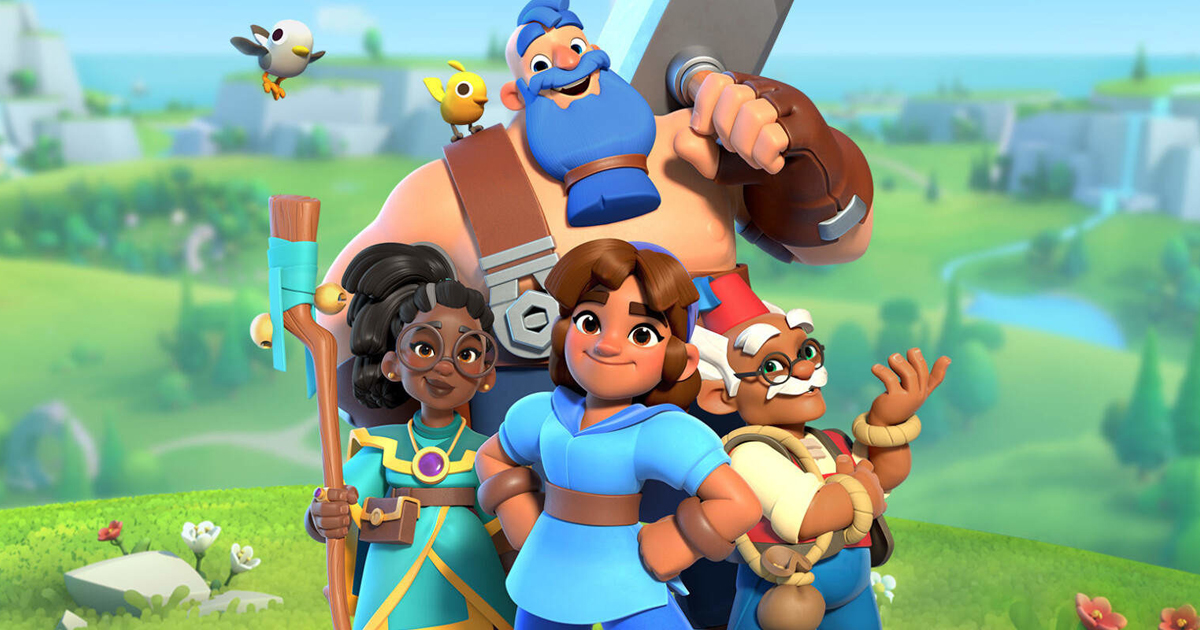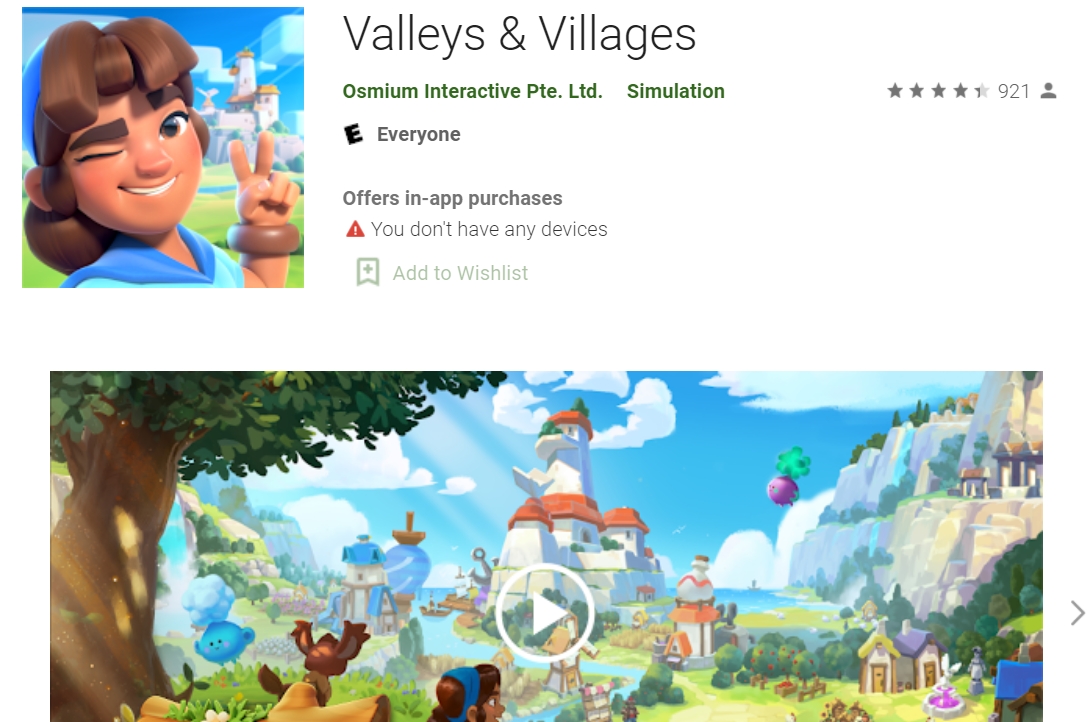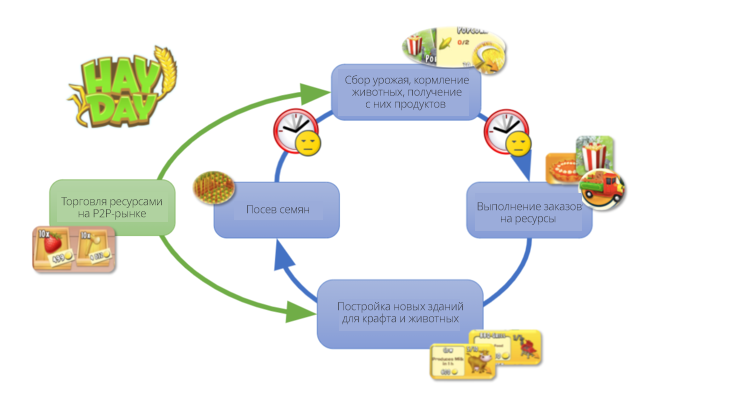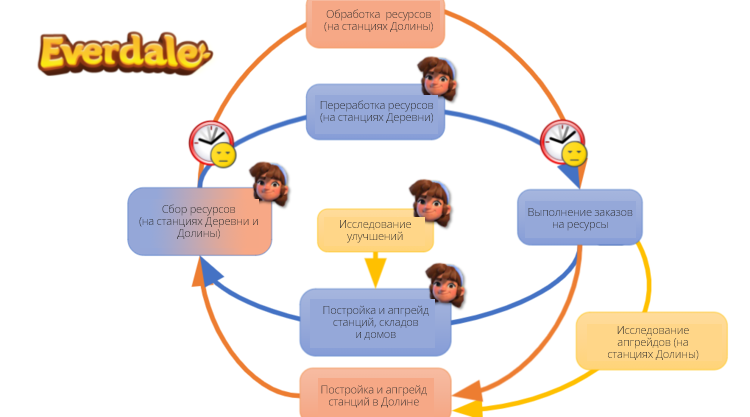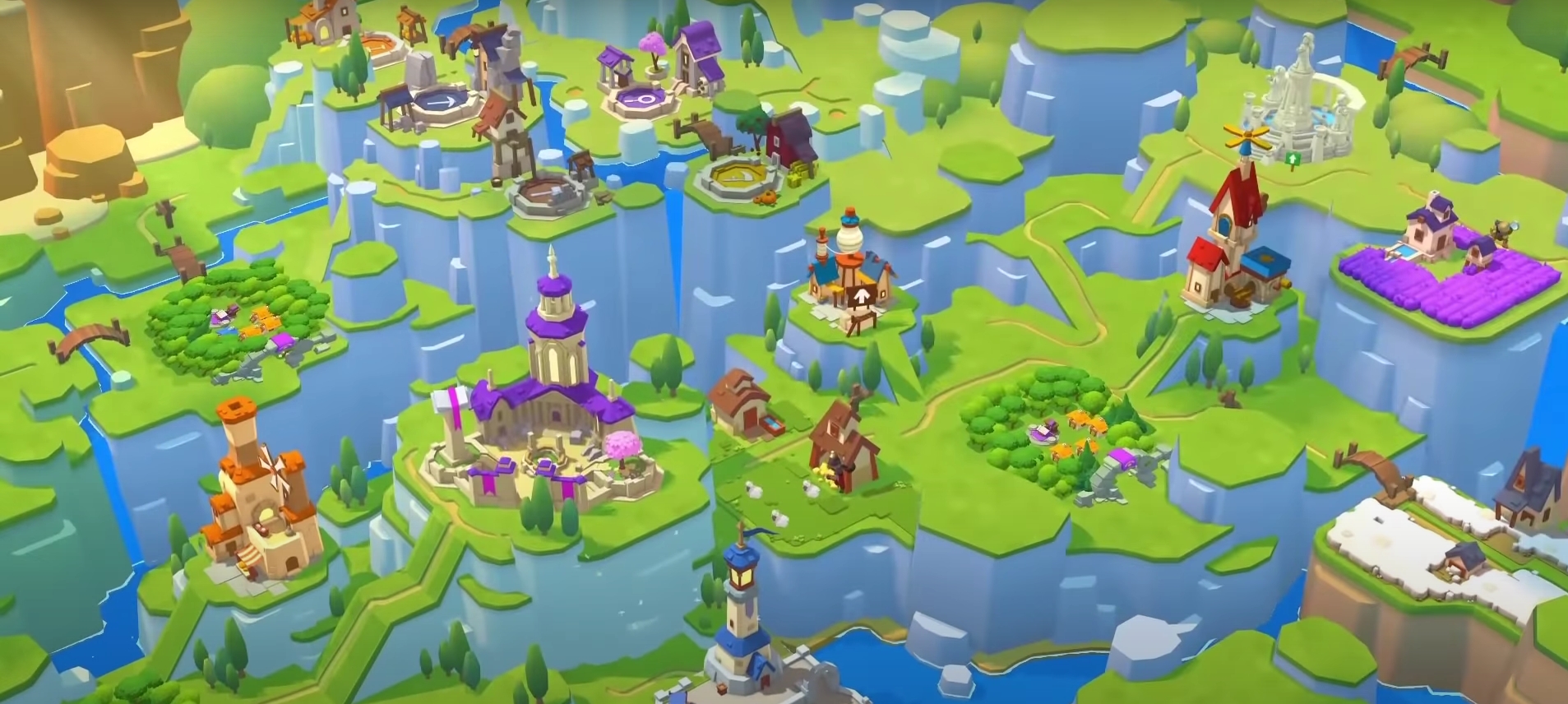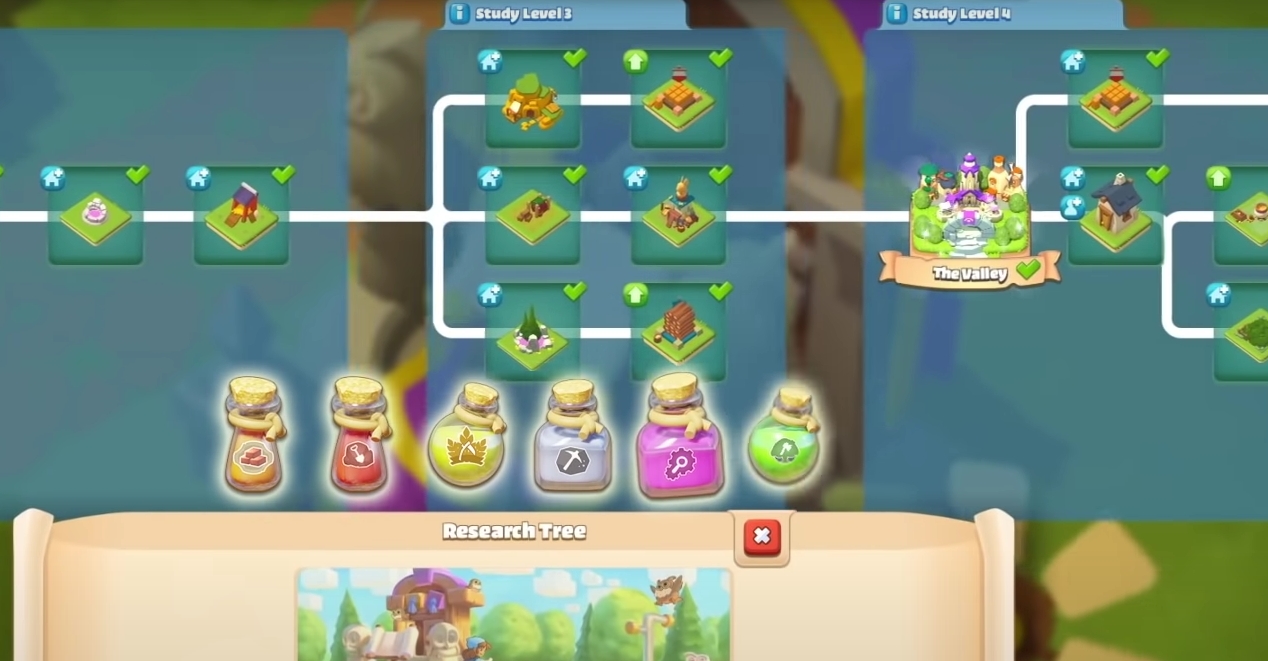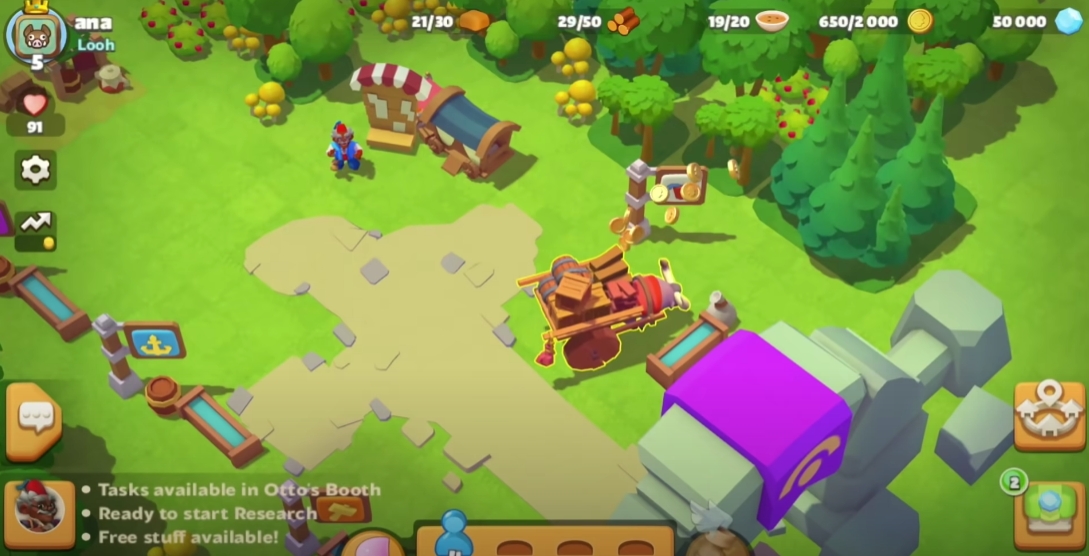Deconstruction of Everdale: unique advantages and main disadvantages of the new Supercell game
At the end of August, Supercell introduced a beta version of its new Everdale game. The authors of the Deconstructor of Fun blog have published a detailed analysis of the project — from gameplay mechanics to monetization and ways to involve players. We present the main points from the material, which also lists the main disadvantages of Everdale.
Everdale
The authors of the analysis were Javier Barnes, Senior Product manager at Tilting Point, and Michail Katkoff, creator of Deconstructor of Fun and head of Savage Game Studios.
Briefly about Everdale and its indicators
Everdale is a typhoon with elements of crafting, partly reminiscent of Township, Family Island or Klondike Adventures. It is important that this is a completely new IP, unrelated to other Supercell projects.
Another detail that distinguishes Everdale from other games of the Finnish company is the approach to launching the project. Although the public beta was released last month, the game actually appeared on the market 11 months ago. Then Supercell presented it on behalf of a fake publisher and under a different name — Valleys & Villages.
This made it possible to test the project on a real live audience, and not just on studio fans in individual markets. However, the financial metrics of Valleys & Villages are hardly outstanding.
According to Sensor Towe r, for the first 10 months, the RPD (revenue per download ratio) in Canada was $0.71 for iOS and $0.80 for Android. For comparison, the RPD Hay Day for the same period reached $5 and $6.66, respectively.
Nevertheless, Supercell apparently believes in it, since it has already brought it to the market under its own name.
RPD Valleys & Villages and similar titles in Canada in the first 10 months after launch
Everdale gameplay and parallels with Hay Day
Everdale’s core gameplay is built around completing crafting orders. Orders bring gold, which together with resources helps to expand and improve the village.
The gameplay loop itself is similar in many ways to Hay Day, but with one important nuance. In the last Supercell project, unlike Everdale, there was a trade between players — a unique element that turned Hay Day from a regular farm game into a social farm.
Cor-gameplay of Hay Day
Supercell has decided to abandon direct trading between players in Everdale. Because of this, the gameplay of Everdale has become less deep.
Everdale Core Gameplay
In return, the Finnish company offered players in midgame shared order boards. They can be upgraded through the collaboration of the entire social group of players (this is called the valley).
Everdale core gameplay (after opening common boards with orders)
There are three key innovations in the game. This is micromanagement of villagers, the construction of buildings shared with other players and research.
Now we will talk about each in detail.
Three unique advantages of Everdale
1. Villagers
By itself, the presence of townspeople is not a unique feature of Everdale. There are similar mechanics, for example, in Family Island. They are also an integral part of The Settlers series. However, in the Supercell game, residents determine the pace of gameplay.
Each resident of the village must be assigned to a separate building for the production or extraction of resources. Since Everdale is a project with elements of crafting, players need to perform several tasks simultaneously to achieve goals. Thus, in the in-game progression system, the villagers perform the function of a “bottleneck”, limiting the number of actions that users can perform simultaneously.
Management of villagers
The residents themselves must constantly use, collect or deliver the necessary products. At the same time, they may stop performing their tasks if they run out of resources. This adds additional micromanagement to Everdale, motivating players to think through production chains and timings for completing goals.
It is worth noting that Everdale is not a typical urban planning simulator. The location of buildings here does not play as important a role as in The Settlers or SimCity. However, according to the authors of the article, such a casual approach deprives the Supercell game of additional depth. Without the need to plan ahead the placement of objects, users can become less involved in the development of their village.
At the same time, Everdale cannot be called an Idler. It is impossible to completely automotize the processes here. Players still have to return to the game regularly to receive tasks and perform new actions.
Resources in Everdale
Katkoff and Barnes note that the methods of involving users in Everdale are simply abnormal for the genre. It requires players to run the game many times a day solely for the sake of short micromanagement sessions.
This approach can quickly capture attention, but just as quickly lead to an outflow of users. The fact is that the gameplay sessions themselves in Everdale practically do not reward players in any way. They have to enter the game not for the sake of collecting accumulated resources or rewards, but for the sake of controlling the inhabitants of their village.
The main disadvantage is that users cannot plan their sessions in advance. Everdale will not be able to launch in order to put the production of some building in the queue and calmly return to the game later.
Another important element of Everdale is the presence of personalization of the villagers. This helps players to create an emotional connection with them and opens up additional space for customization. The ability to pump residents and change their appearance can be a plus for Everdale. However, this can also play a negative role, since the emotional connection will surely disappear as new residents are discovered and each of them needs to be controlled.
2. Valleys
In Everdale, the player’s village is located in the so-called valley, where several other settlements of other users are located. There are similar mechanics, for example, in Shop Titans.
Players within their valley can:
- jointly extract resources and create valuable products in special buildings;
- get lists of the creation of certain items for crafting through merchant ships (similar mechanics were in Hay Day);
- improve the valley with upgrades in the research center.
Valley in Everdale
User engagement is determined using a reputation system, the increase of which opens up new rewards and allows you to fulfill more orders for crafting.
This implies one of the main disadvantages of Everdale. For participating in the development of the valley, the user receives certain rewards. At the same time, inactive players risk being “expelled” and losing all accumulated resources. Katkoff and Barnes believe that users should interact with each other not only because of the fear of expulsion.
As noted above, another disadvantage of the valley is the lack of trade between users. Because of this, players cannot specialize in individual resources and exchange them. For the sake of progress, they have to build the most diverse product chains and productions. Therefore, each village, in fact, becomes similar to the rest.
A list of friends who are with you in the valley, and their rating
3. Research
There are two research trees in Everdale:
- improving your village — to complete the study, the player needs to assign a certain resident to him and wait for the timer to end;
- Improving the entire valley — here players must complete a number of special crafting orders together.
Research needs to be completed to discover new buildings, products, and other improvements. However, the system itself does not allow the player to choose a specialization and globally influence the development of his village.
Users will have to complete all the research anyway. The only choice is to open technology “A” before technology “B” and vice versa. That’s why Katkoff and Barnes call the Everdale research tree an unnecessary add-on to the standard upgrade system.
Everdale Research Tree
The main factors that can affect the success of Everdale
Supercell is known for regularly “killing” its new games at the softlonch stage. Everdale will be able to avoid the fate of Hay Day if the studio competently manages to scale the project, retain users with new content and properly monetize them.
1. Competitive advantage
Everdale is made in the cartoon fairy-tale style that Supercell is famous for. Despite the seeming childishness, such a visual style has proven itself well in projects aimed at an adult paying audience. It is enough to recall Merge Dragons, Dragon City and Evermerge.
At the same time, Supercell will have to compete with titles that have very high ARPPU rates. Due to the lack of a well-known IP behind them or obvious gameplay advantages, developers will not be able to count on significantly lower CPI than other similar titles. Thus, the company will have to rely solely on a high level of LTV to make Everdale a profitable and long-playing project.
2. Monetization
You can only buy consumables at Everdale. Unlike Clash of Clans, you cannot purchase additional workers here who will stay with you forever — they are bought only for a while. Also in the game there is no way to expand the production queue or skip the task completion time, as in other crafting titles. Everdale designers seem to be afraid to give players more freedom, so as not to destroy the project’s economy.
Because of this, users cannot deviate from the standard path of development and somehow “outsmart” the game. You can only grind or buy more resources to make your life easier. At the same time, all players will have approximately the same gameplay experience, and due to the lack of specializations, it makes no sense to interact closely with each other.
According to Katkoff and Barnes, there is only one explanation for Supercell’s desire to limit the user’s freedom of action. The developers just wanted to simplify the economy and manage its balance by a small team.
Game Store in Everdale
3. Engagement and retention
At a short distance, Everdale seems to be as exciting as possible. That’s why the game is sure to have high short-term retention rates. However, the main question is whether the project will be able to capture the attention of users for a long time?
Supercell plans to involve players in the following way: at first, Everdale starts as a very simple single-player game, after which depth is added to it using the valley system. Here lies the main risk. Due to the lack of advanced mechanics — for example, specializations and trading — players may eventually lose interest in the project.
Instead of developing their small town, users experience social pressure by investing time and resources in improving the valley. This contradicts the assurances of the developers themselves that Everdale is a relaxing and comfortable game in which you do not have to be afraid of competing with other people.
Yes, in the new Supercell project, no one will really attack you. However, users experience a much more dangerous fear — being expelled from a social group.
How can Everdale be improved?
Katkoff and Barnes note that Valleys & Villagers had a fairly low revenue—to-downloads ratio – especially in comparison with its closest competitors for a similar initial segment of the life cycle. Perhaps Everdale itself has not yet fully revealed its potential in terms of monetization. However, current indicators suggest that players either do not find reasons to spend money, or do not stay in the project for a long time.
Everdale is interesting primarily at the initial stage of the game. And since Supercell has publicly published its beta, the company probably sees potential in the long-term development of the project.
According to Katkoff and Barnes, Everdale will be successful if Supercell fully implements the promise made by the user. We are talking about creating a system of valleys in which players interact closely with each other and develop their unique villages.
To do this, the company needs to fulfill three main goals:
- add product specialization and trade between players. In this case, the villages will be different from each other, and the ideas embedded in Everdale will make sense. Perhaps Supercell is just afraid to stop users from trading without destroying the internal economy of the game;
- to make the investment of resources in the development of the valley safer. Supercell can add the ability to create secure private valleys only for their friends (similar to clans in Clash Royale). Another option is to give players more freedom in the management of the valley, so that the decision to expel a particular user is made by a general vote.
- get rid of the monotonous grind. One option is to add random events to the project, which are available in games like The Settlers or SimCity. For example, natural disasters or helping animals that can then be tamed. This will add depth and variety to the project. Now there was only one temporary event in Everdale, which, according to the mechanics, did not differ in any way from the core gameplay of the game and did not offer unique rewards.
Katkoff and Barnes also compare Everdale to Northgard, which was released on mobile devices this year. Yes, this is a paid and more hardcore game aimed at a completely different audience. However, it has a number of mechanics that are just missing Everdale.
Northgard is a very responsive strategy that challenges players and does not force them to regularly engage in trivia and grind. Because of this, it seems alive, while Everdale in its current state looks like a mechanical, routine and in some sense soulless game.
Supercell needs to give users more freedom and reasons to interact in order to revolutionize the genre and create a new hit with a turnover of over $1 billion. You can’t just collect ready-made ideas from other games, while completely refusing to take game design risks.
